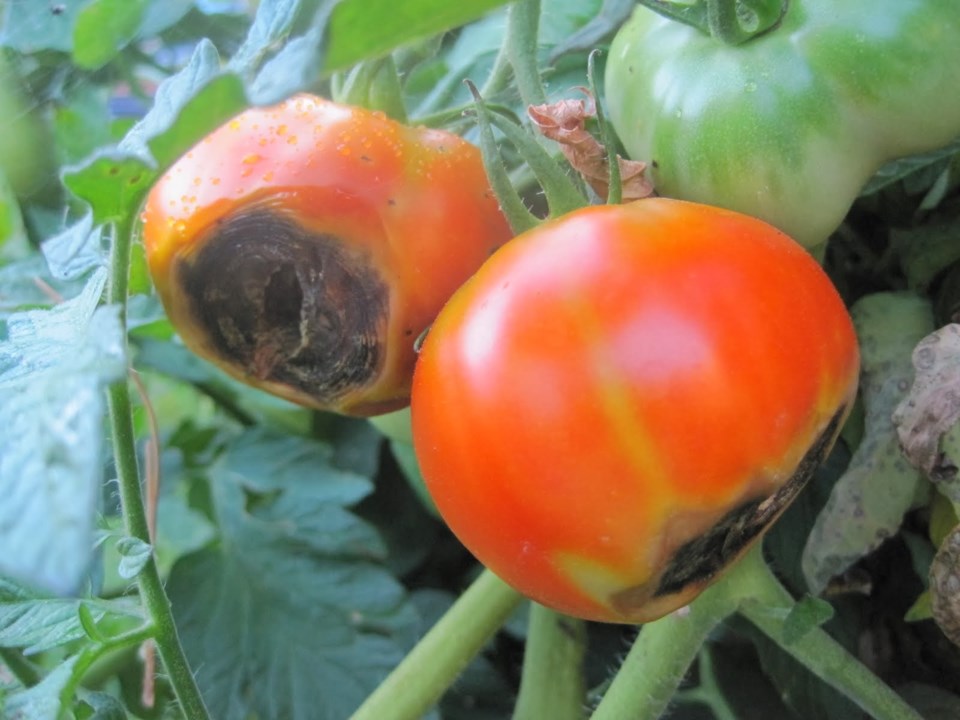There is nothing quite like the taste of a garden tomato. For prairie gardeners, tomatoes must be planted out as bedding plants as our often cool and short growing season does not give enough days to harvest to plant tomatoes in the garden by seed.
Lycopersicon esculentum or what we fondly call the tomato are often called the "favourite" garden vegetable. Because of this the different types of tomatoes we can grow are endless. However, for next spring choose tomatoes that have a fairly short number of days to harvest and it is always good to choose those tomatoes that are resistant to one or more of the common tomato diseases. Give some thought to what you are going to do with the future product as that will also help you to choose the best tomato for you to grow.
Tomatoes are part of the Solanaceae family and are vines. They have two types of growth ‑ determinate and indeterminate ‑ which simply means determinate types of tomatoes are smaller in stature and will grow from one to three feet in height. Once the flowers form at the vine tips, the plant will stop growing. Indeterminate tomatoes will keep growing and producing until the fall frost or other factors stop that growth. These tomato types will need more pruning than determinate tomatoes to ensure energy is put into fruit production rather than just vegetative growth.
Tomatoes, like every fruit producing crop, need adequate water and nutrients in order to produce a good crop. Plants should be fed regularly with a complete fertilizer to ensure they can grow and produce at their optimum. Keep the soil evenly moist to ensure the fruit is allowed to size up rapidly. In the case of the tomato this is especially important as tomatoes get a condition called blossom end rot when subjected to uneven watering conditions. When a tomato sizes up, they seem to grow right before your eyes so you can imagine how important it is to have adequate water and nutrition. Blossom end rot is actually a calcium deficiency that exhibits a sunken dark area on the end opposite the stem. However, it is caused by inadequate water that is needed to carry the nutrients (calcium in particular) to the rapidly growing fruit. So if this is a problem in your garden, keep those tomatoes evenly moist and ensure they have adequate nutrition.
Tomatoes are a warm weather crop that require both warm soil and high temperatures (with a cooler temperature at night) to grow to their optimum. So on the prairies, we need a warm summer in order to grow good tomatoes in general. However, a point to consider is that many tomato types do better in cooler years. For example, a number of years ago, we had a cool, wet summer and my tomato crop consisted of one of the heirloom tomatoes I was growing ‑ Brandy Wine. So once again diversity is necessary.
One last thought is as fall approaches we try our best to keep the summer going. We go out and cover our gardens when the temperature dips to get just a little "more time on the vine." A consideration is if we just have a night or two of lower temperatures it is likely useful to cover your garden, but if we are truly into fall and our temperatures have fallen, your tomatoes, being a warm season crop, will no longer be growing appreciably and you can likely cease the eternal garden covering.
Enjoy your tomatoes.
Hanbidge is the lead horticulturist with Orchid Horticulture. Find us at www.orchidhort.com; by email at [email protected]; on facebook @orchidhort and on instagram at #orchidhort.
Tune into GROW Live, weekly on our facebook page https://www.facebook.com/orchidhort/?modal=admin_todo_tour or check out the channel GROW https://www.youtube.com/channel/UCzkiUpkvyv2e2HCQlFl0JyQ? on youtube.
Face-to-face courses are beginning in Saskatoon with Floral Design Level I on Nov. 20.



